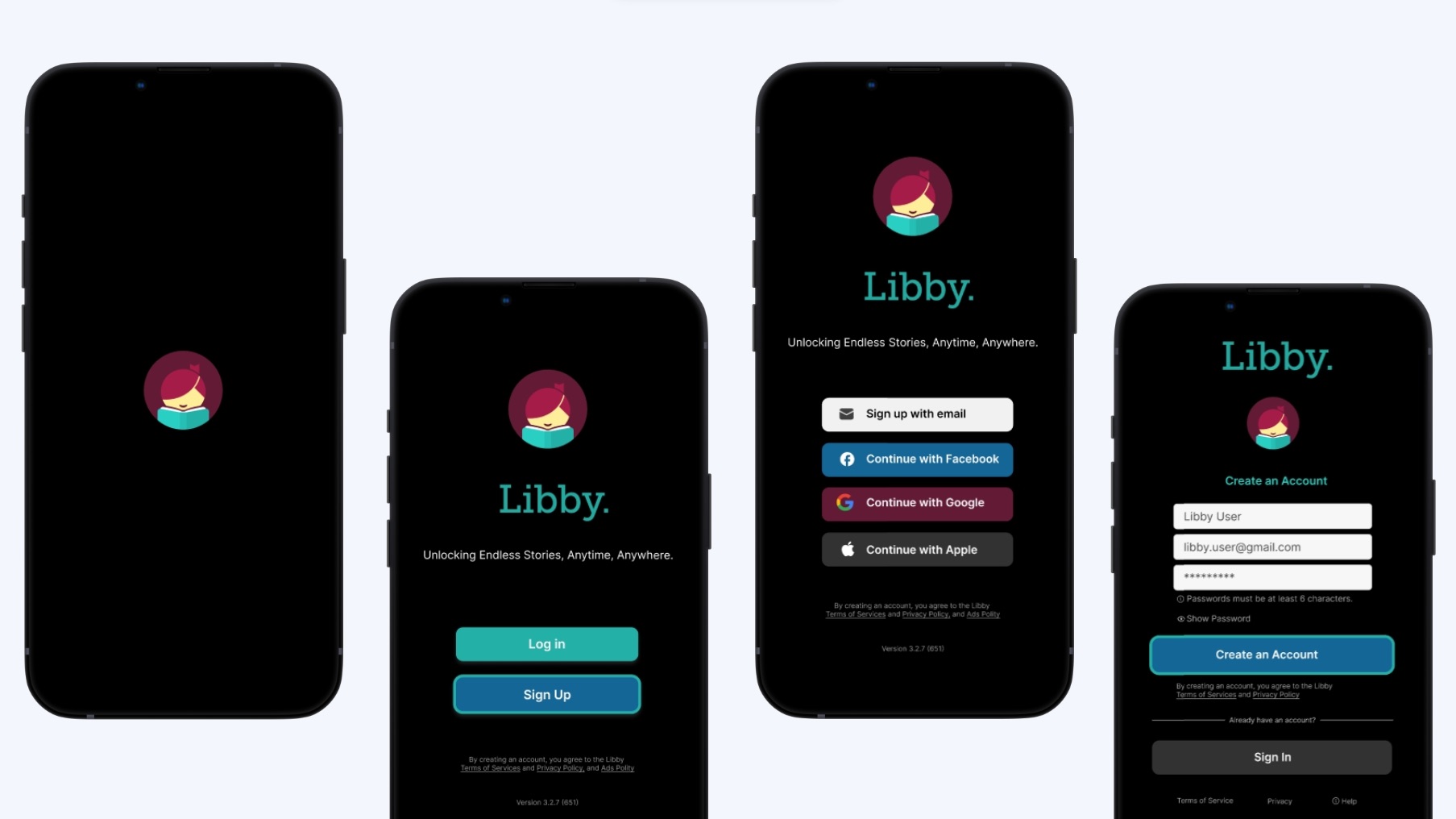

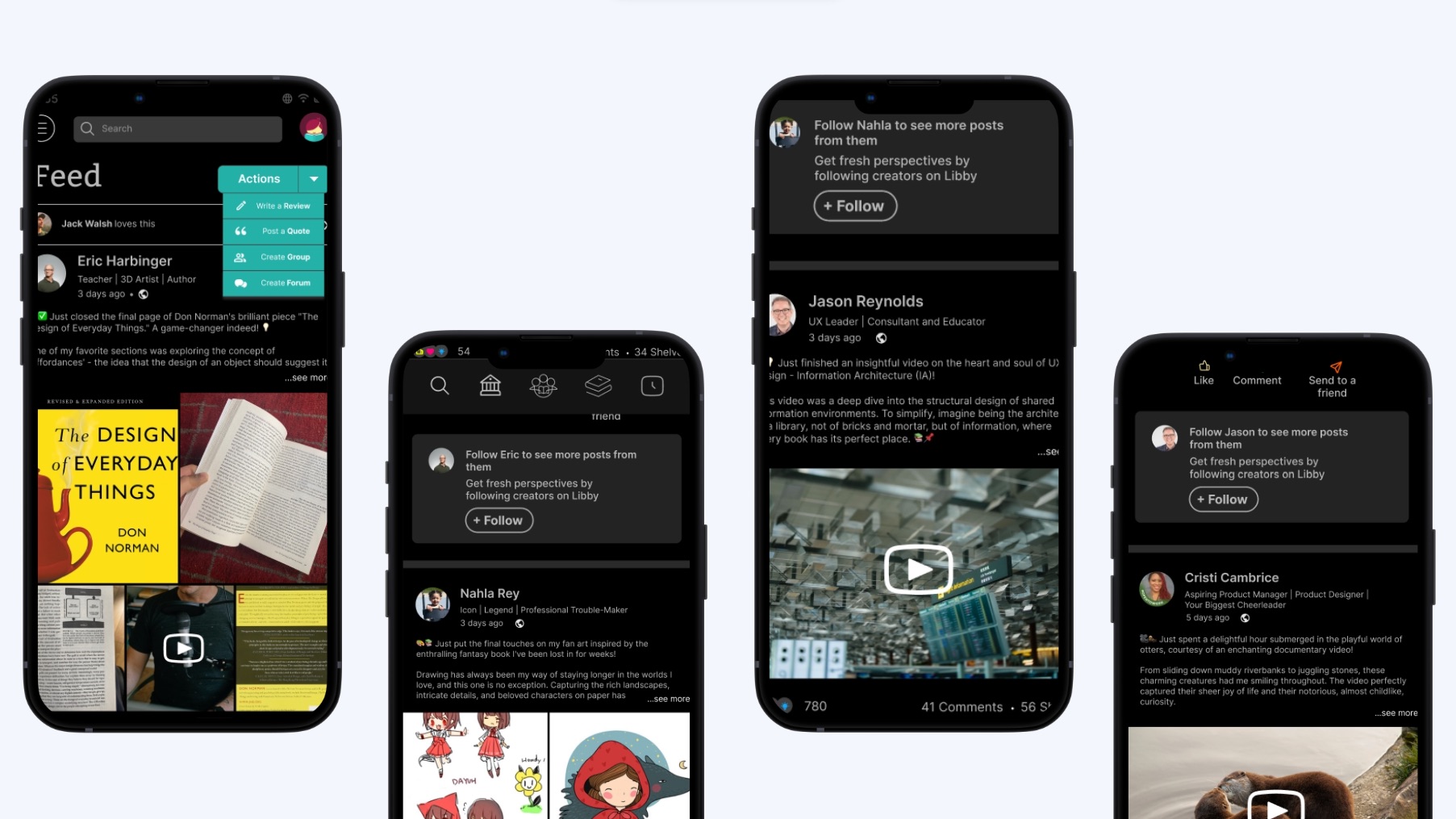
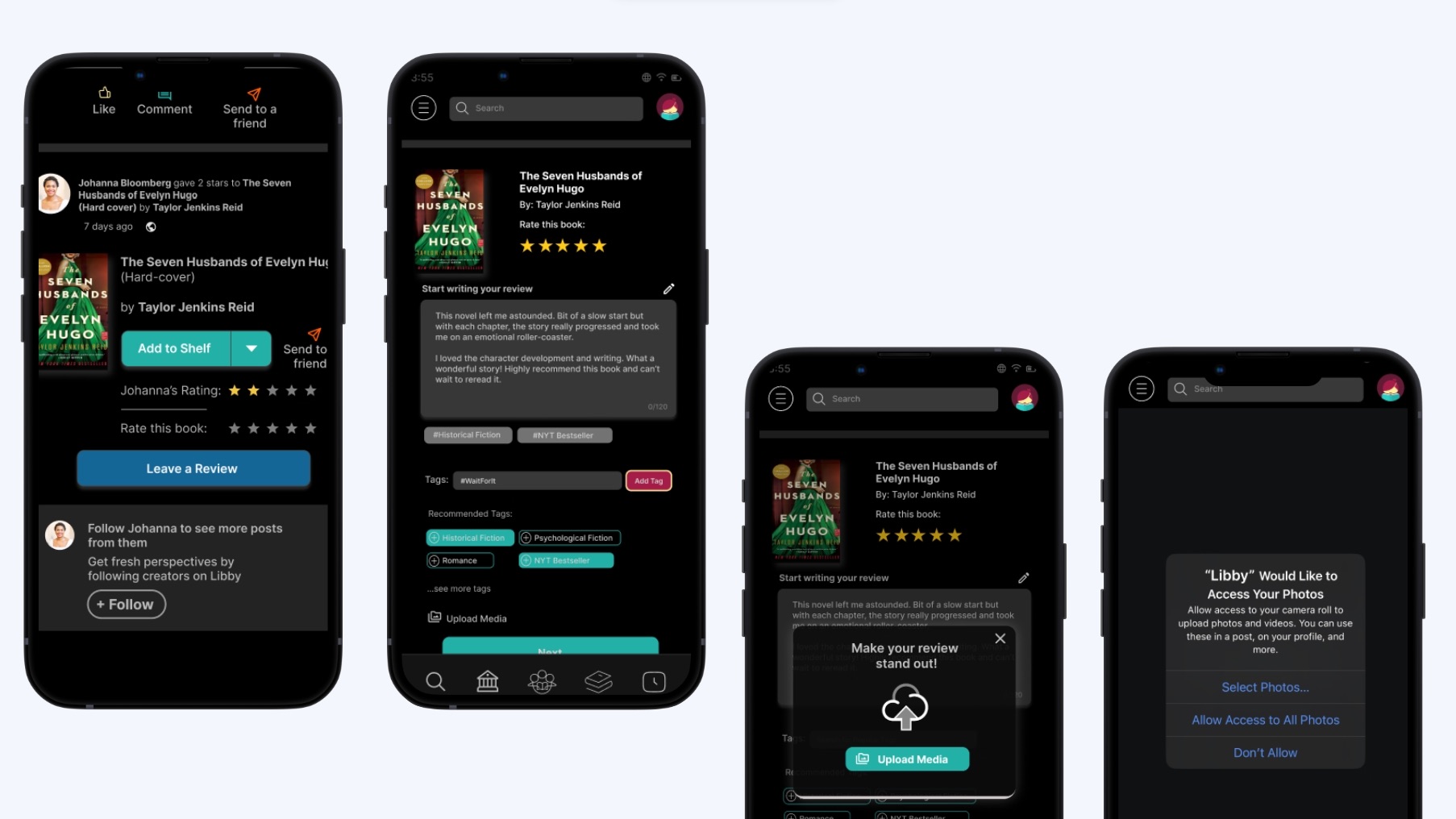
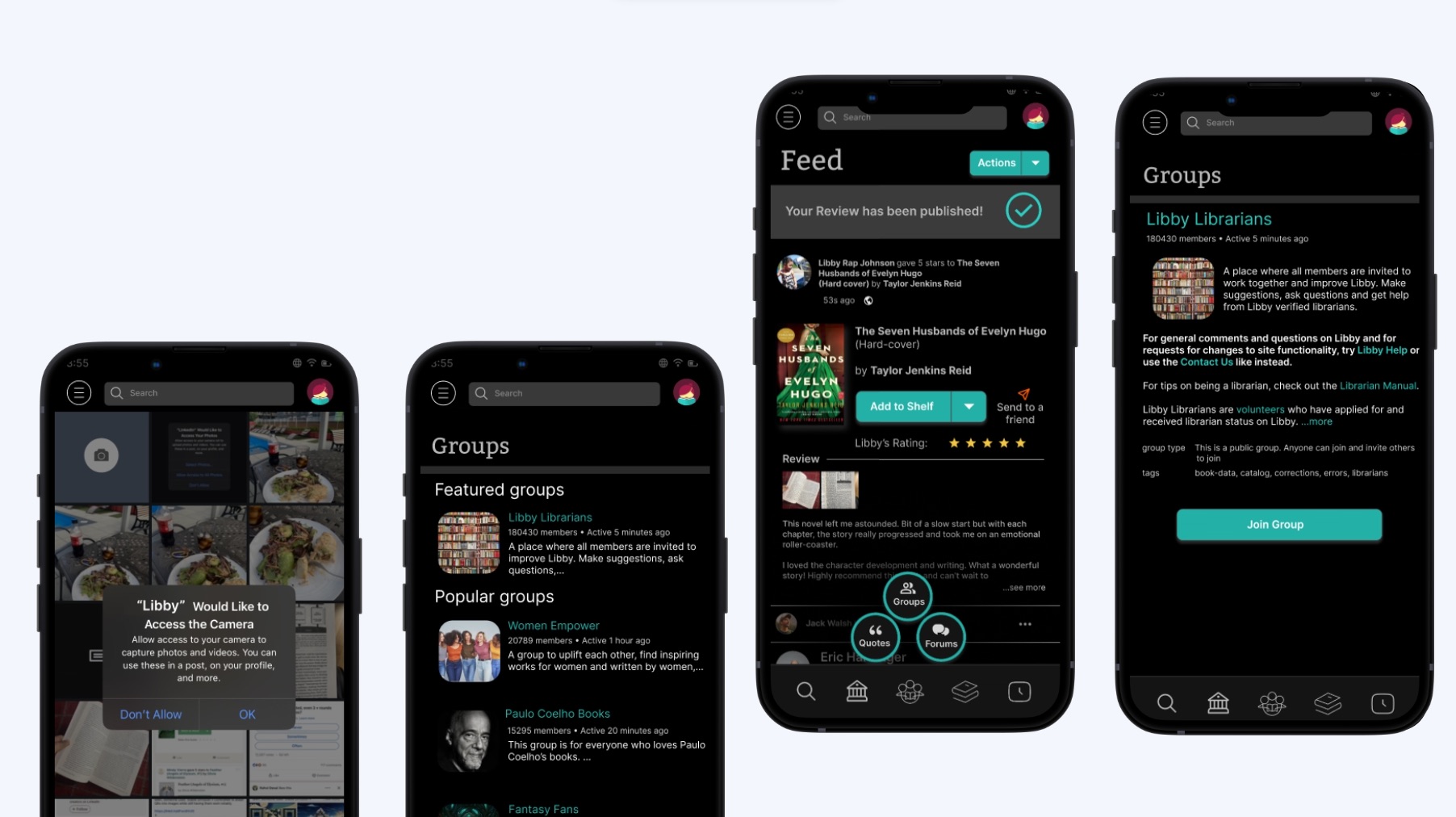
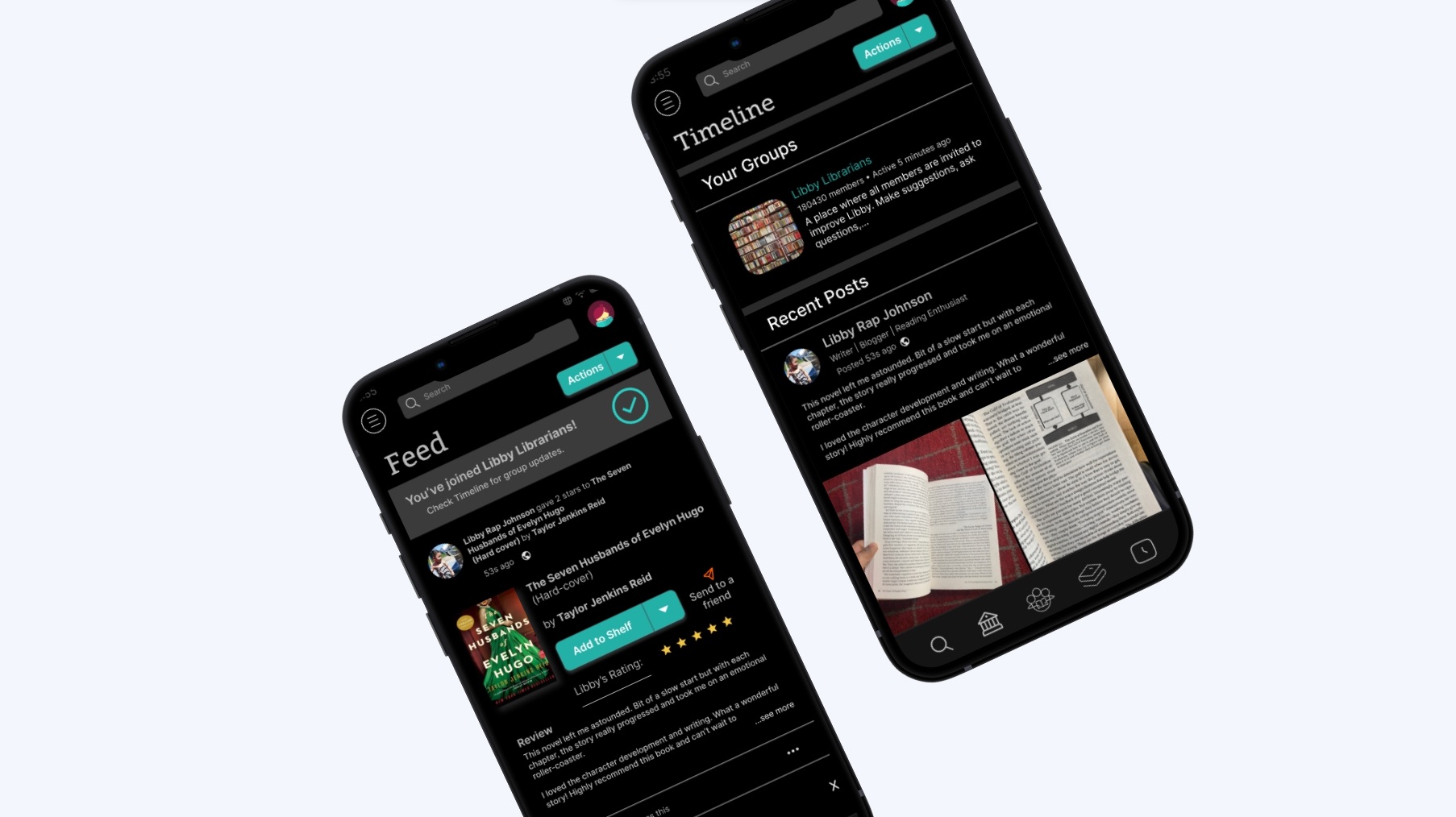
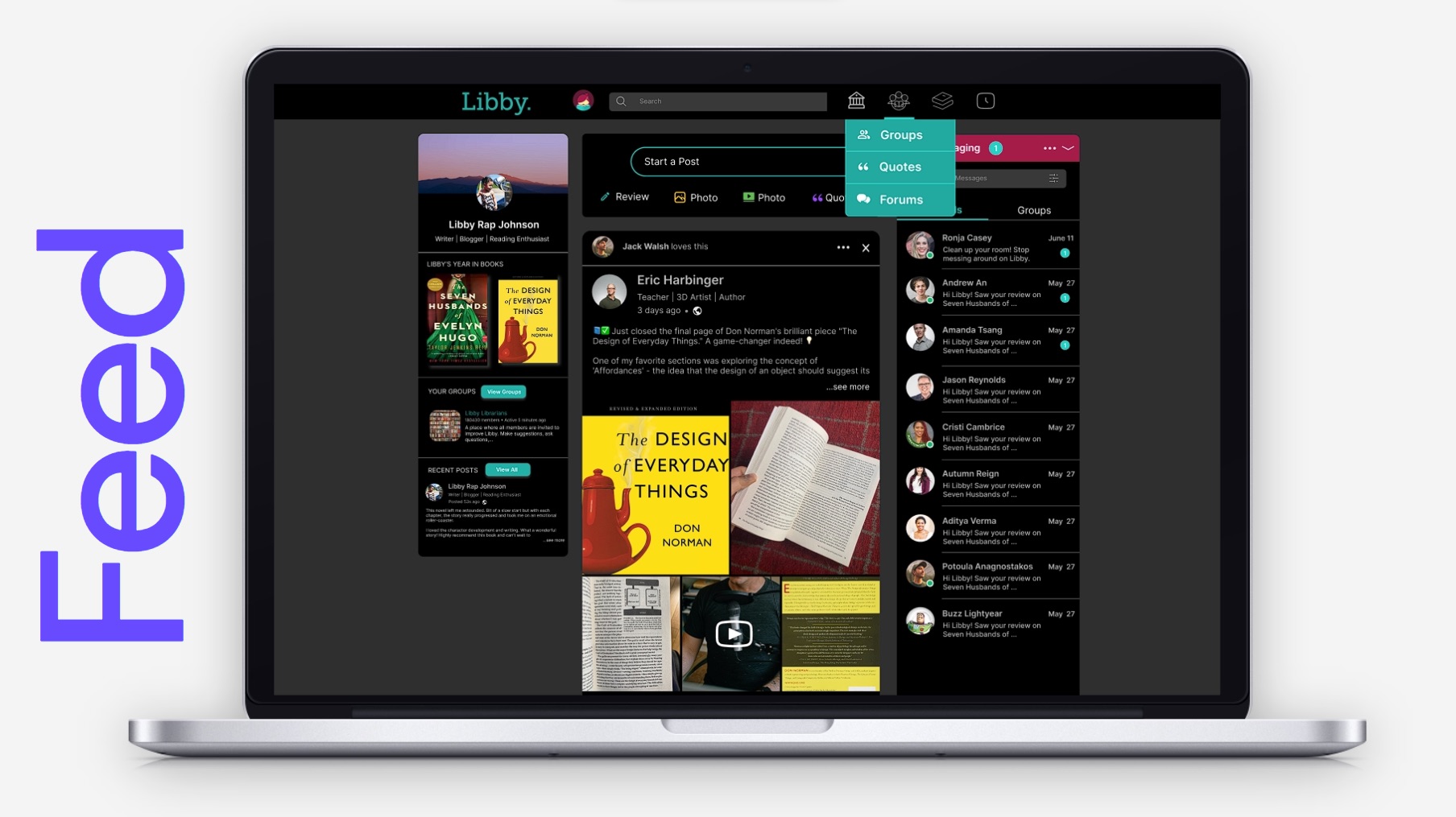
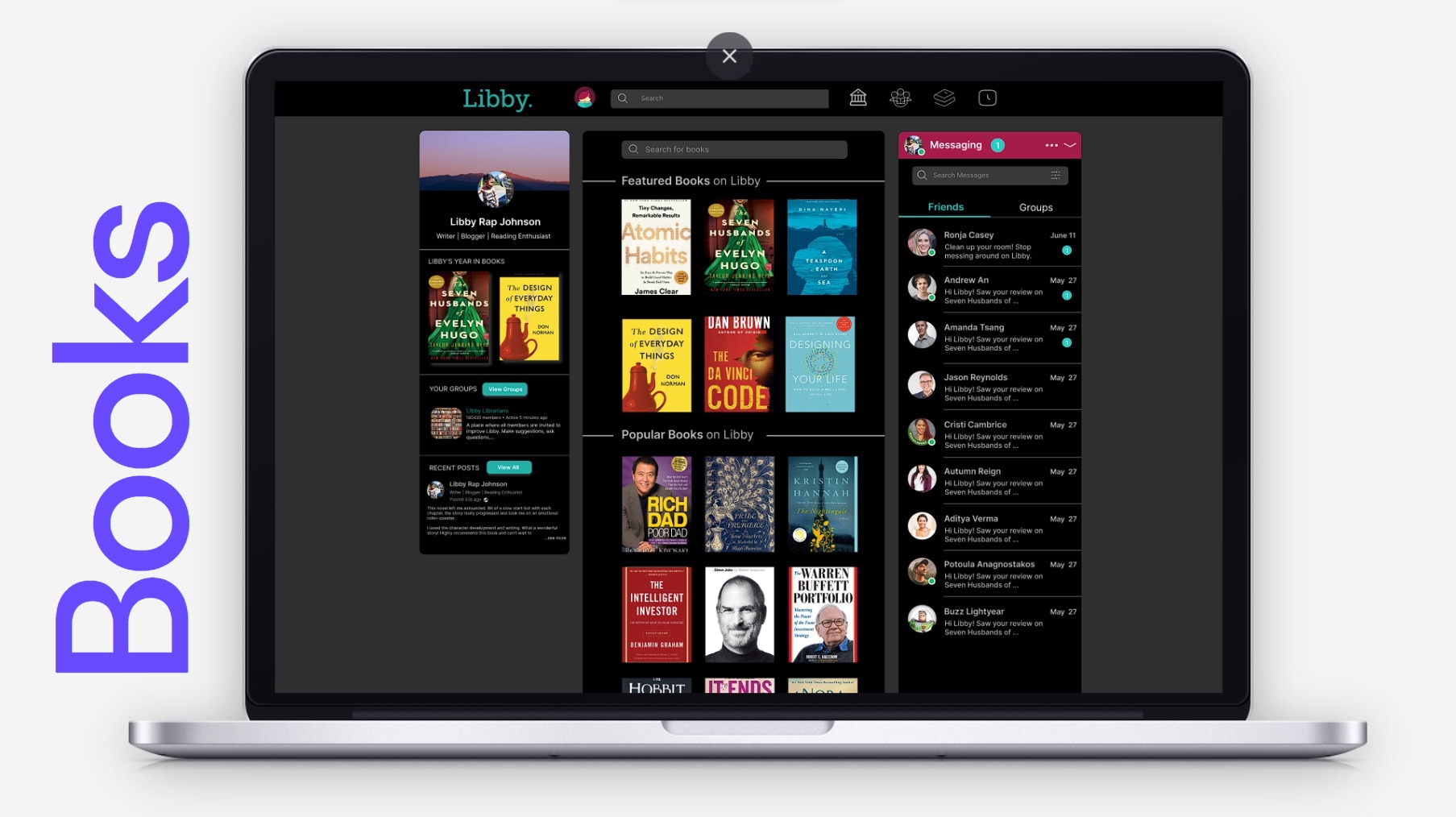
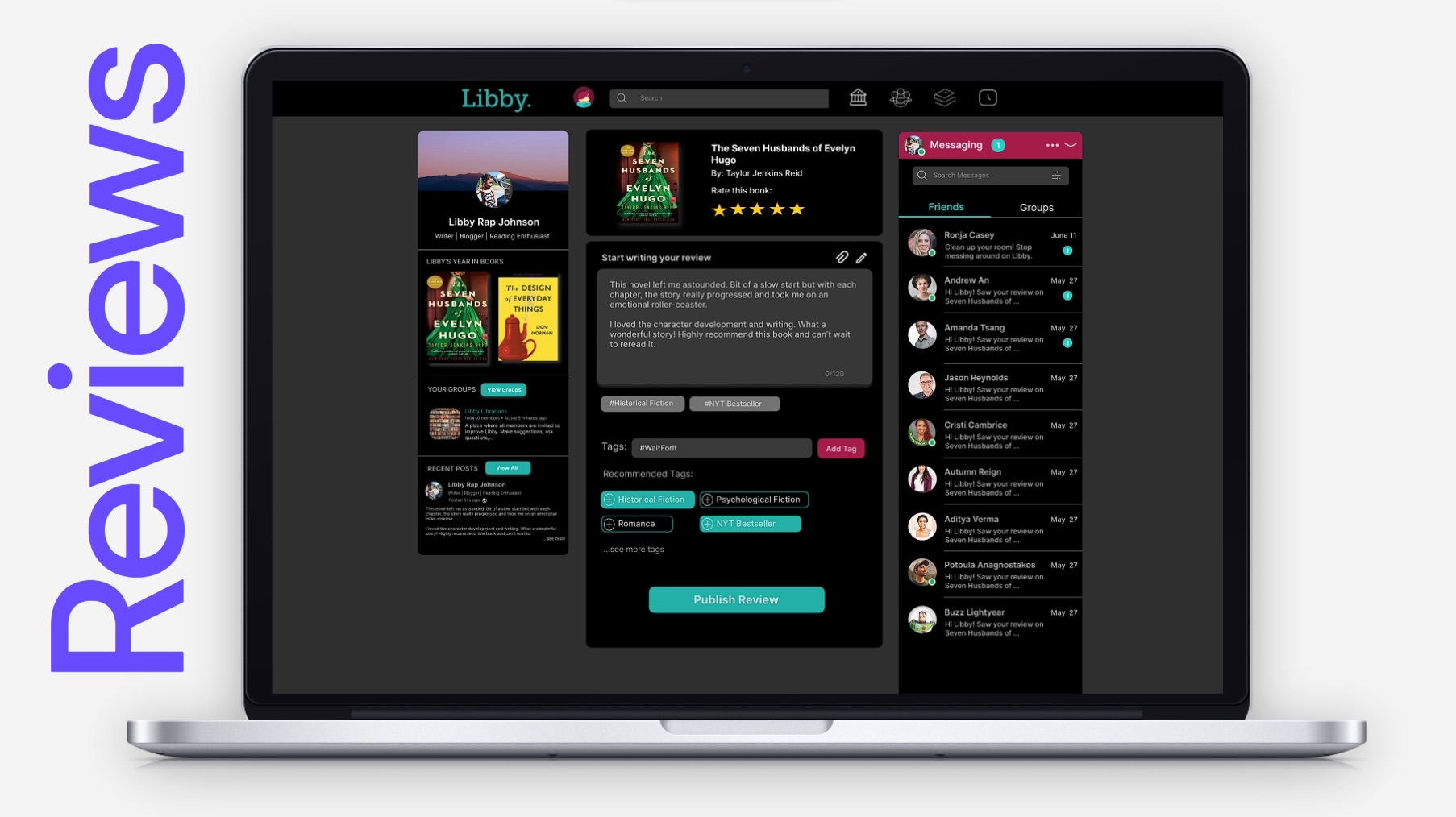









Libby is a free app developed by OverDrive, Inc. that allows you to borrow ebooks and digital audiobooks from your public library. You can stream books with Wi-Fi or mobile data, or download them for offline use and read anytime, anywhere. All you need to get started is a library card.
Libby works with public libraries that use OverDrive to lend digital copies of books to their patrons. It provides a user-friendly interface and a seamless borrowing experience. Features include the ability to adjust text size, bookmark pages, and even send certain books to your Kindle device. As of my knowledge cutoff in September 2021, the Libby app did not have built-in social networking features.
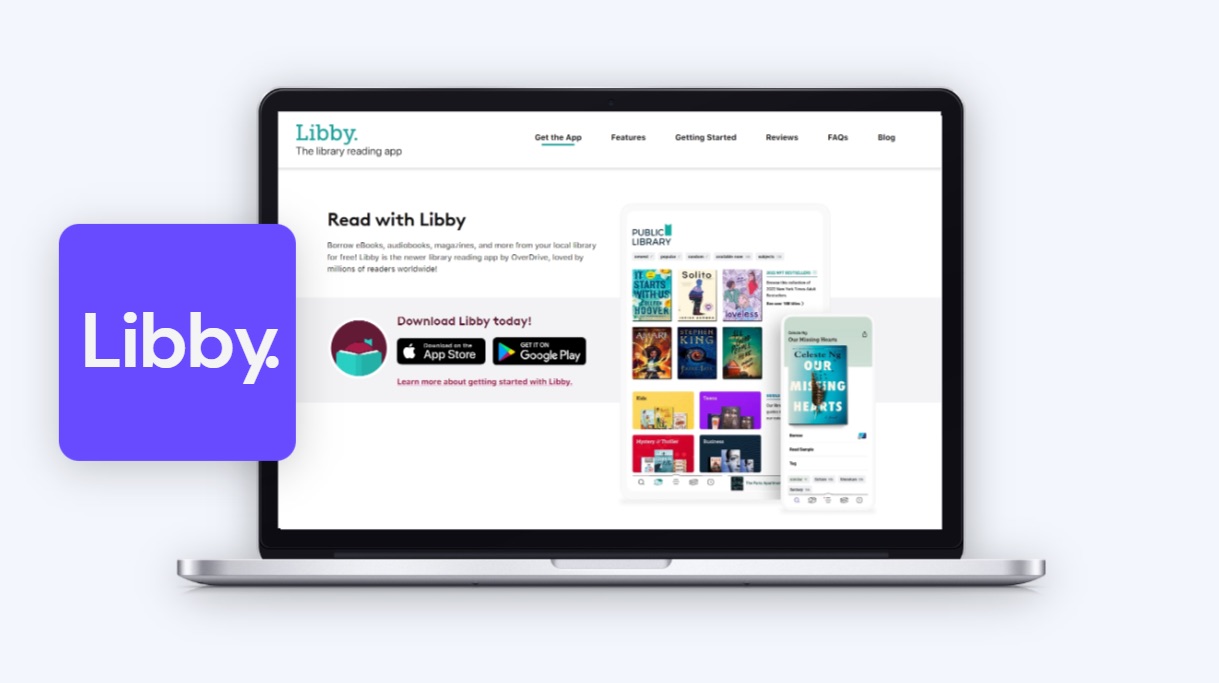
As a team of three product designers, we found ourselves often getting lost in lengthy chats about our favorite books. We all shared a love for reading that ran deep. One day, amid our bookish banter, we had a lightbulb moment -
"why not combine our design skills with our passion for reading?"
Our search for the perfect app to revamp led us to Libby, a treasure trove of books but somewhat lacking in the social department. As a lifelong bookworm, I've had countless times where I wished I could quickly ask other readers about a book's pacing or hear from trusted pals before making my pick.
"why not add a social twist to Libby?"
This way, readers could not only borrow books but also share thoughts, exchange reviews, and make recommendations. It's all about turning solitary reading into a shared experience, one post at a time.
Research and Discovery: My initial aim was to immerse myself in understanding the existing Libby app environment and its user base.
Ideation: Upon gaining a clear understanding of user needs, I aimed to generate creative solutions for integrating various social networking functionalities.
Design and Prototyping: My focus in this phase was to translate the team's ideas into tangible design elements.
Usability Testing: The goal of this phase was to validate our design choices by getting feedback from real users.
Iteration and Implementation: Post-testing, our goal was to refine and polish our designs based on user feedback.
"95% of regular readers would use this feature regularly"
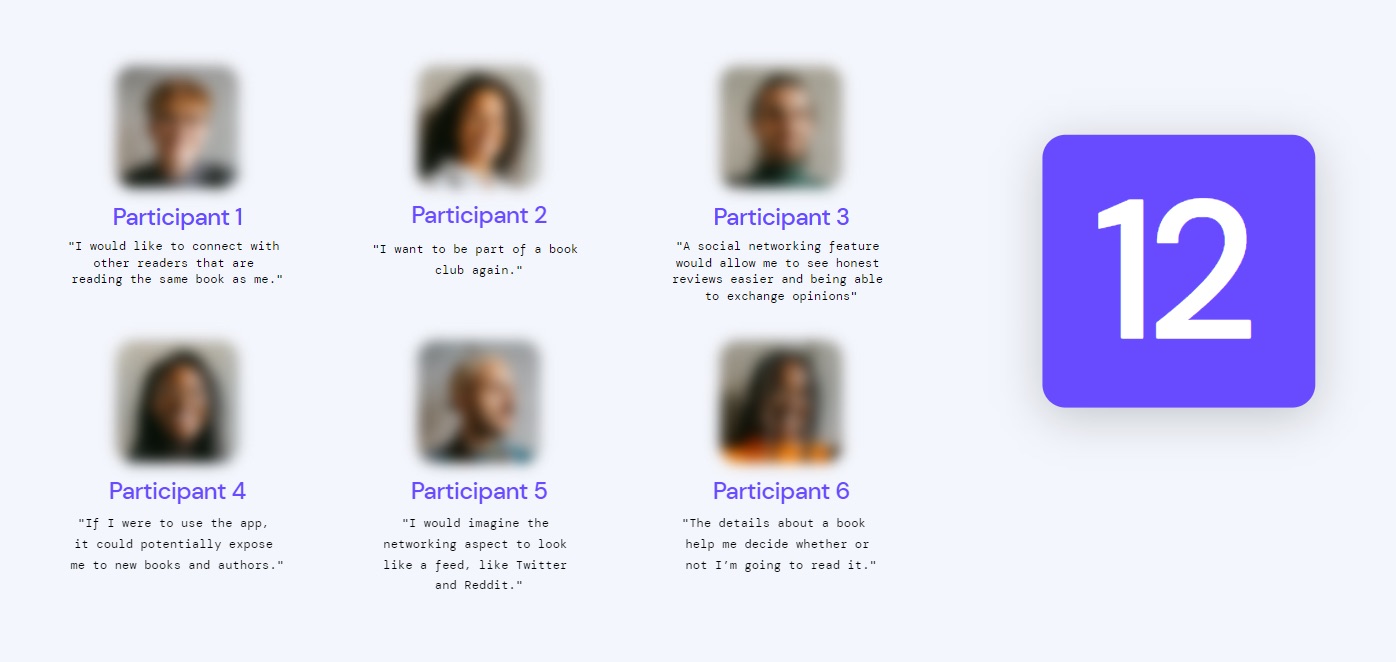
To really get to know our readers, I put together an interview guide. I dug into their world, asking about their reading habits, how they stumble upon new authors, and what makes them pick one book over another.
Then, we switched gears and talked about social media -
what they like about it and whether they'd be cool with sharing what they're reading on a social platform.
Finally, we got into their heads a bit, trying to figure out -
what kind of stuff they'd want to post and share on a space that mixes reading and social interaction.

As I immersed ourselves in the initial phase of user research, I unearthed a substantial need among readers: the desire for a trustworthy, engaging community specifically tailored for literary discussions and book recommendations. My participants expressed a longing for a platform that went beyond just providing books, a space where they could converse with like-minded individuals, dive into thoughtful discussions about plot twists and character arcs, and get trustworthy recommendations.
There was a clear gap in the market: an accessible digital environment that seamlessly blends reading with robust social interaction. This insight set the stage for the problem statement and defined the direction of our UX design endeavor.
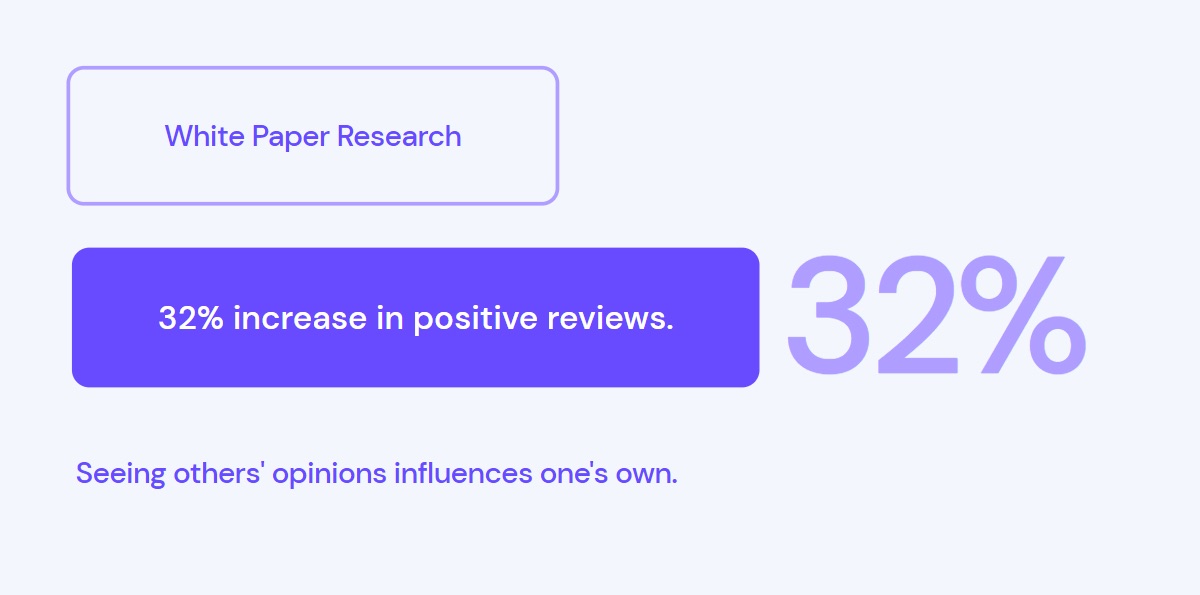
As I envisioned the networking feature for readers on Libby, I realized the importance of understanding the nuances of user behavior on social media platforms. To deepen my understanding, I plunged into some academic research:
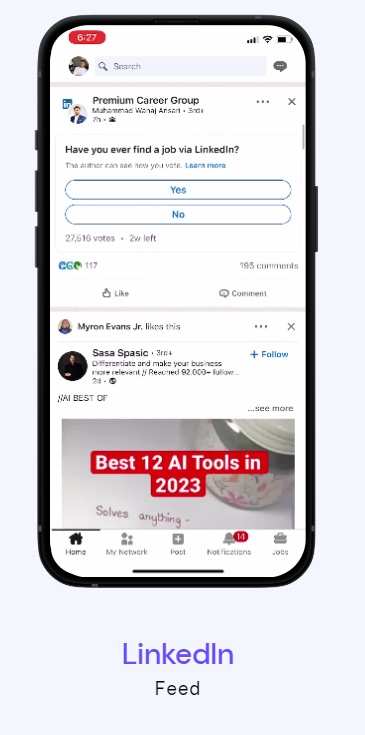
To further ground my research and explore the current landscape, I conducted a comprehensive competitive and comparative analysis. My investigation spanned 16 different platforms, divided evenly between competitors and comparators. While all provided valuable insights, I chose to primarily focus on those that I found most inspiring for addressing the problem at hand. Interestingly, the majority of my competitors lacked the social features I was aiming to incorporate into Libby. For my comparative analysis, I zeroed in on three main platforms that offered compelling elements I could draw inspiration from:
LinkedIn's Feed offers a fascinating study of how to foster professional networking and meaningful conversation in a digital space. The way content is curated and delivered in the feed can provide useful insights for creating engaging discussions around books in Libby.
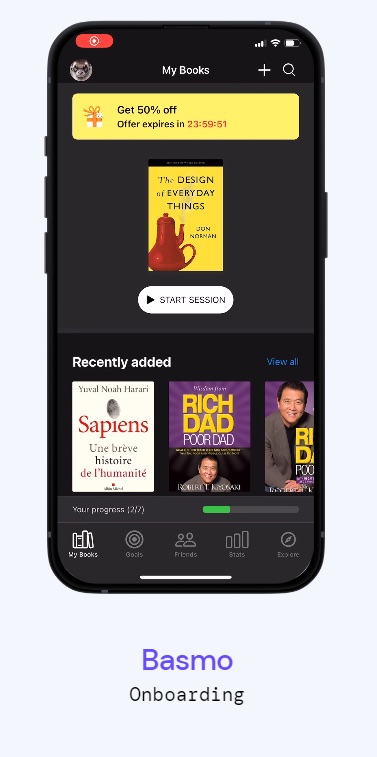
The onboarding process of Basmo, with its intuitive and user-friendly design, was an excellent model to follow. A seamless onboarding experience is critical to engage users from the start, especially when introducing new features like social networking.
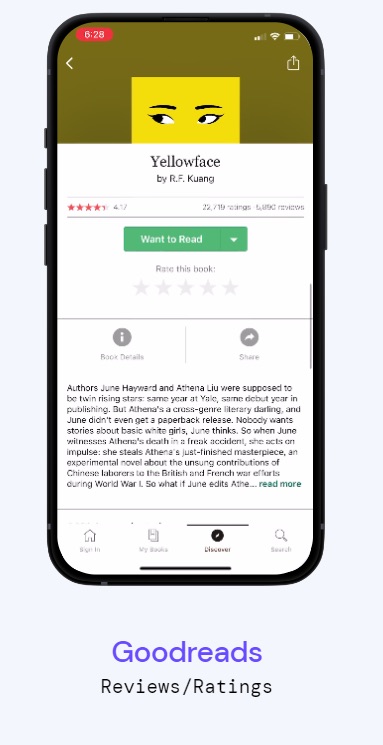
In my design journey, I knew I had to get a grip on the usual designs and features found in both book-related and social media apps. So, I rolled up my sleeves and dived into a feature analysis of these apps. I kept an eye out for patterns – things like navigation setups, interaction styles, and little bits of UI that seemed to pop up again and again.
I also kept my other eye on those unique, standout features that made each app special. It was like piecing together a jigsaw puzzle, understanding how to blend the familiar and the unique to create an engaging and intuitive user experience.
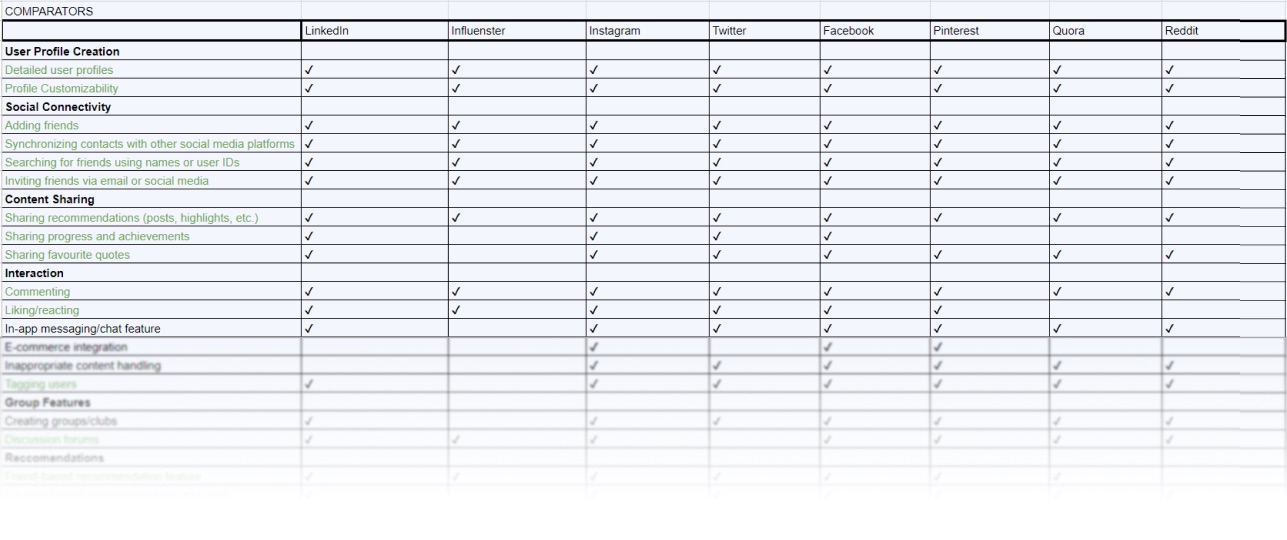

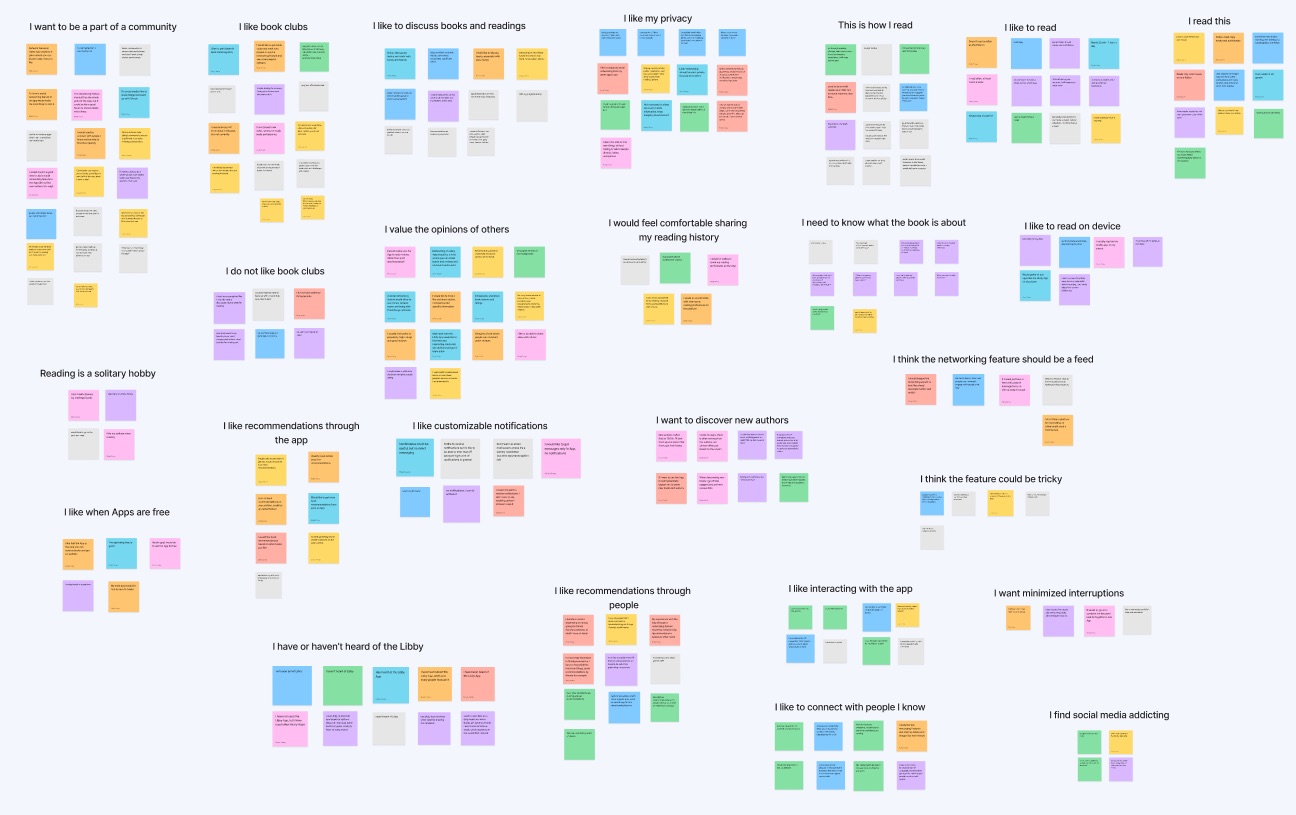
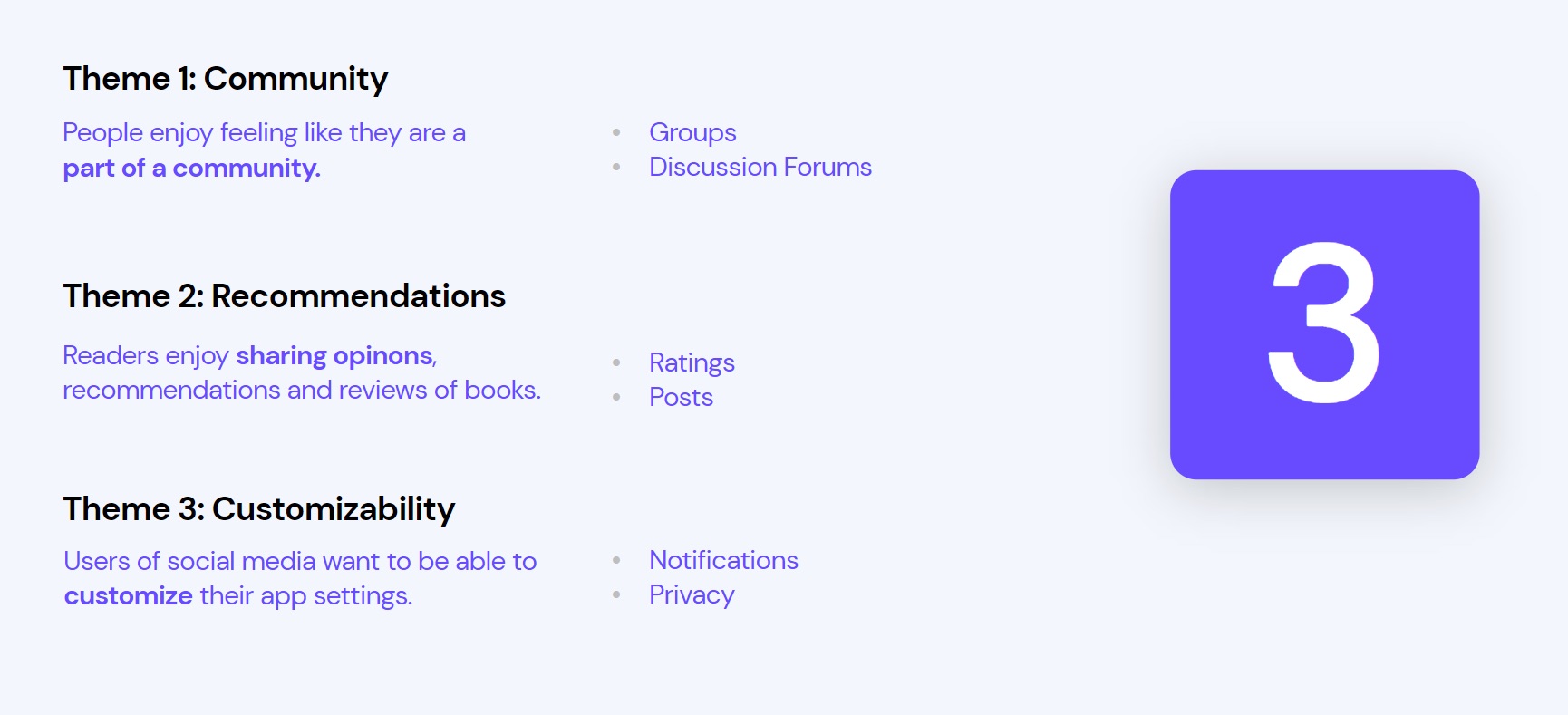
In this section, I explore the value of customer journey maps as a tool to illuminate the primary frustrations experienced by our users. By charting out the user's path, from initial engagement to eventual book selection, I was able to identify the pain points that lead to an unsuccessful reading experience.
The diagram showcases the the customer journey map of one of the users, Emily Reader, who would like to be able to discuss the pacing of the book she's reading with other readers.
Customer Journey Maps:These maps serve as a visual narrative of our users' interactions with Libby, detailing various touchpoints, user emotions, and potential pain points.
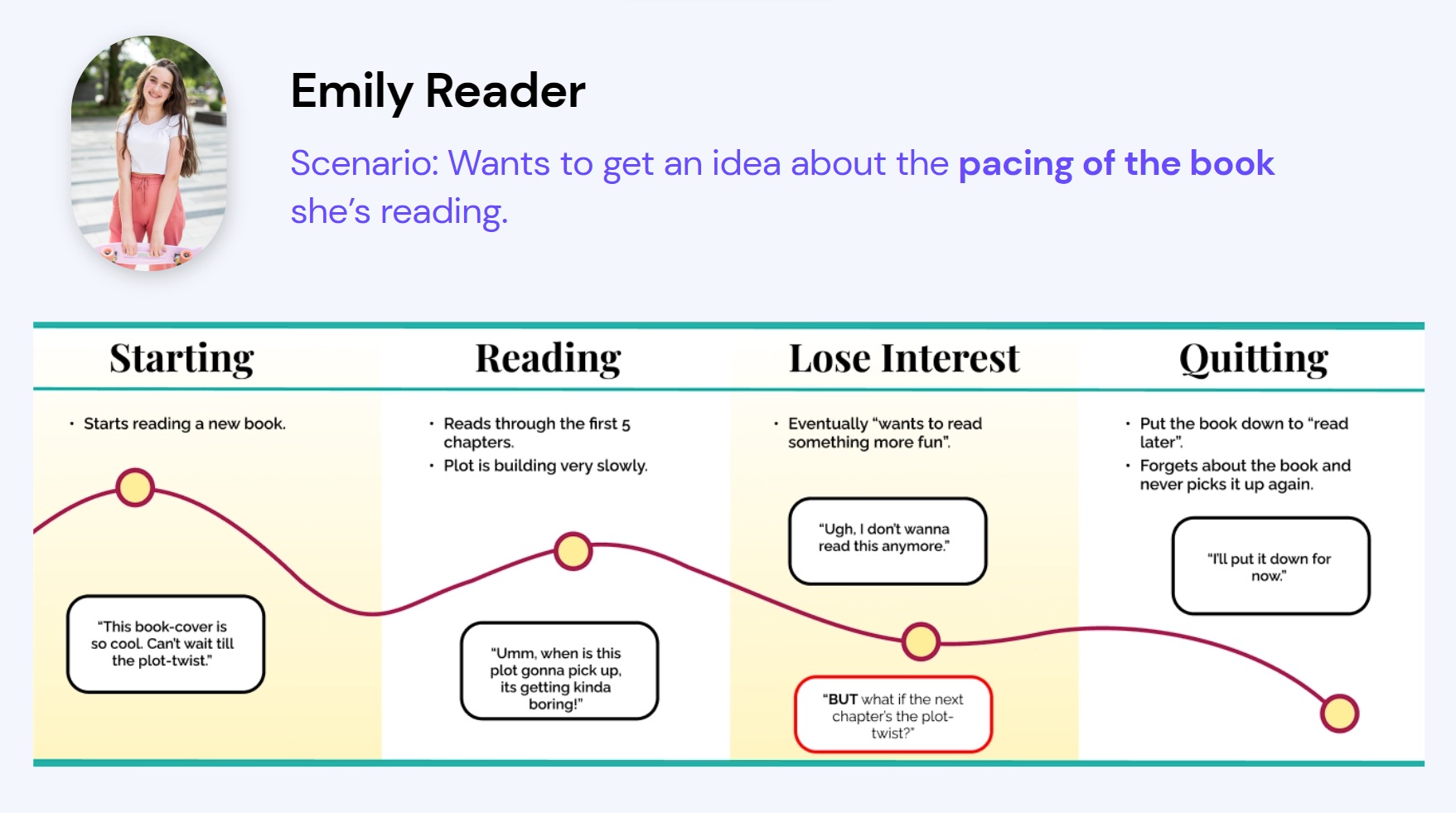
Identifying Frustrations:By analyzing these journey maps, I was able to pinpoint key areas where users may face frustrations. For Emily, her lack of knowledge about the the pacing of the book eventually led to her "putting the book down for later".
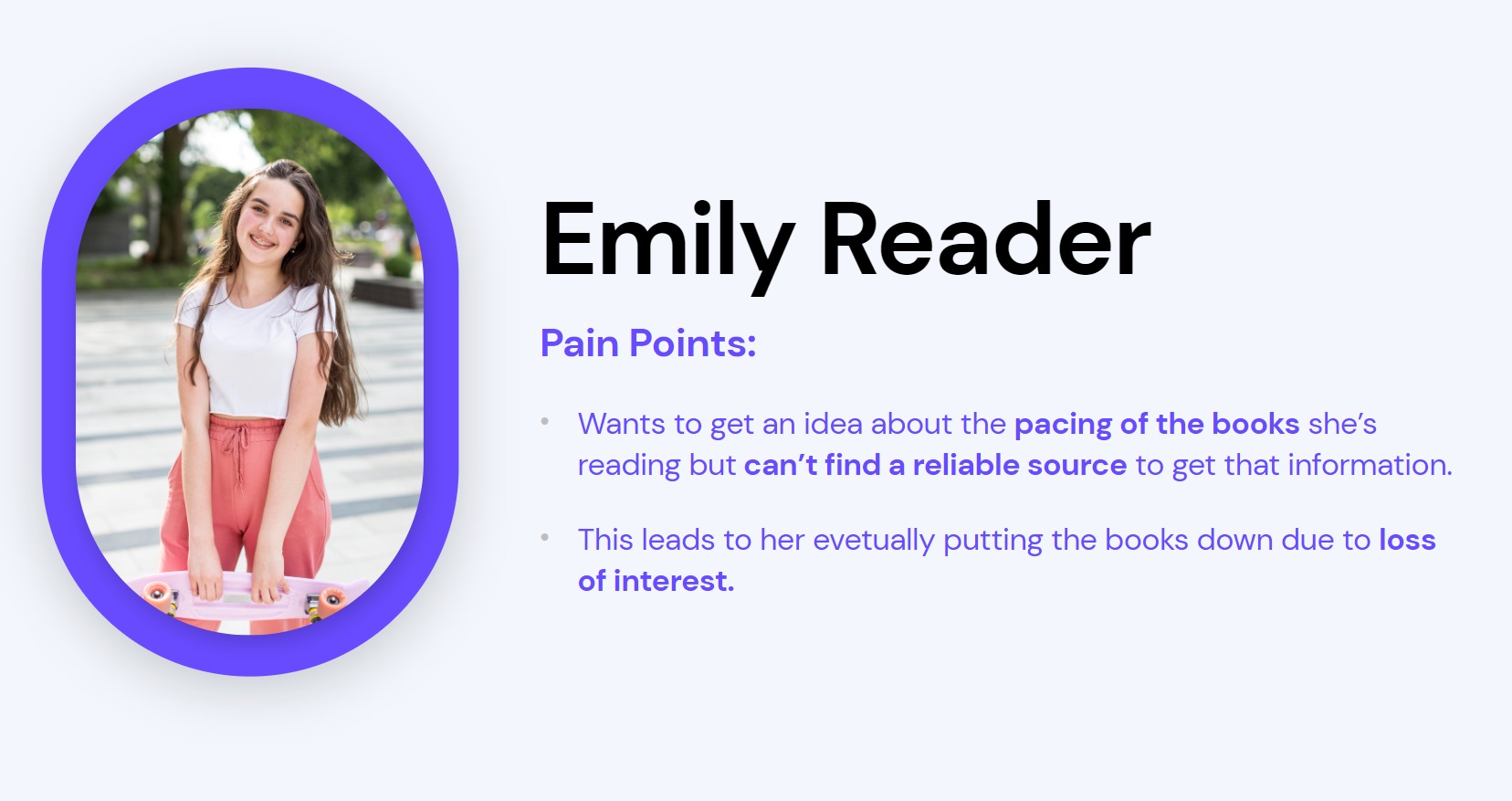
But just imagine,
what if she's one chapter away from a mind-blowing plot twist that could completely change her view of the book? Suddenly, that book she abandoned could become her next favorite read. I saw Emily's predicament as more than just a problem -
it was a golden opportunity for me to step in and find a way to turn these 'almost'moments into 'can't put it down'experiences.
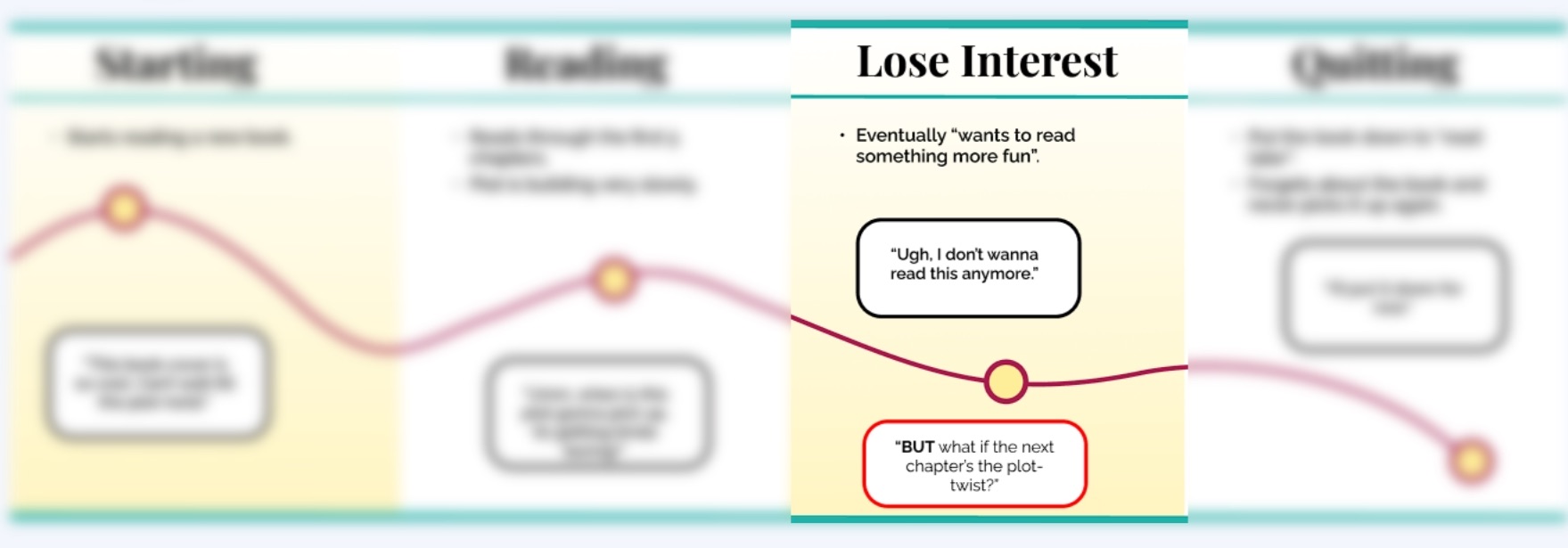
Following the customer journey maps, I began to bring into focus the individuals behind the journey - the users. Drawing from insights unearthed through interviews and affinity mapping, I created a series of user personas.
I crafted both primary and secondary personas, each reflecting a different facet of my target user base. This wasn't just about demographic data or reading preferences, but about stepping into the shoes of these individuals and truly understanding their needs, frustrations, and aspirations.
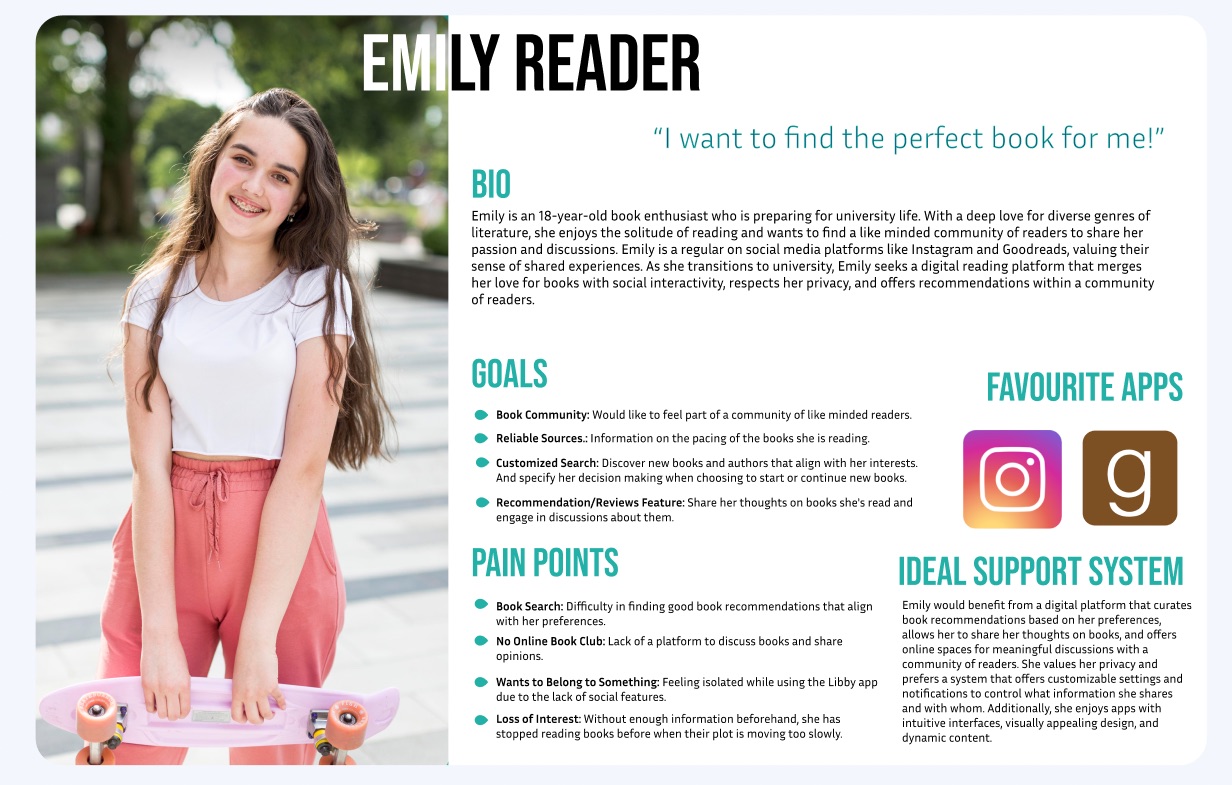
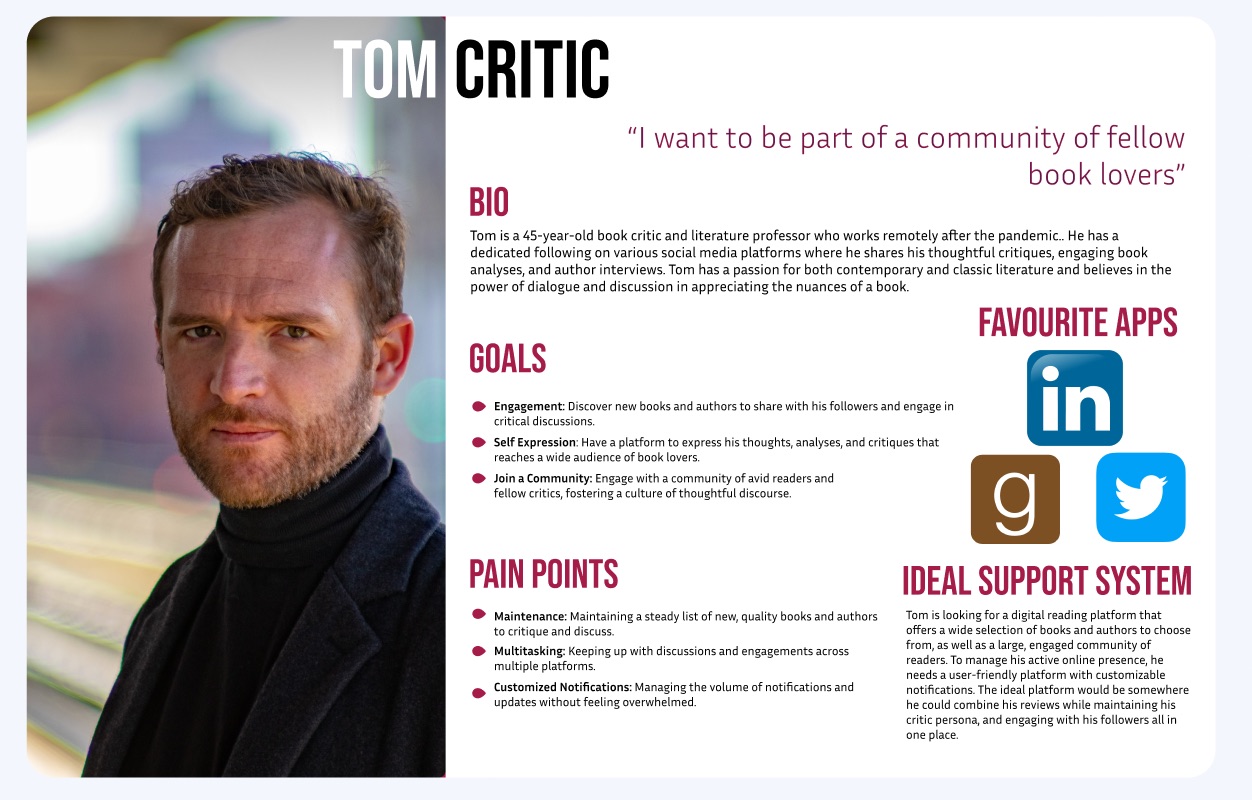
Following the creation of user personas, I embarked on a fascinating journey, imagining Libby not just as an app, but a full-scale business.
The starting point was figuring out what actions a Libby user might execute, visualizing the steps they'd take on their literary exploration. I then thought about the people our Libby users would interact with directly, opening the doors to understanding the front-stage characters that breathe life into the user experience.
But no front-stage can run smoothly without a sturdy back-stage.
So, I contemplated the hidden heroes, the back-stage employees, ensuring the front-stage staff have everything they need to serve our users.
However, the backbone of this entire operation comes down to the unseen, yet vital support processes that work silently in the background, ensuring seamless delivery of data and services to all.
Venturing into the world of social media brought along its unique set of challenges. Community guidelines had to be defined and monitored, demanding the need for dedicated monitors operating behind the scenes. These guardians would depend on stringent safety and privacy policies as their compass.
To be prepared for potential obstacles like account hacking or cyberbullying reports, a customer-service panel became an obvious necessity.
But their effectiveness would hinge on a solid training regimen, empowering these front-line heroes with the knowledge and skills necessary to assist our users effectively.
Thus, through this service design blueprint, I uncovered the intricate tapestry of interactions and dependencies that would transform Libby's social networking feature from an idea into a captivating reality.
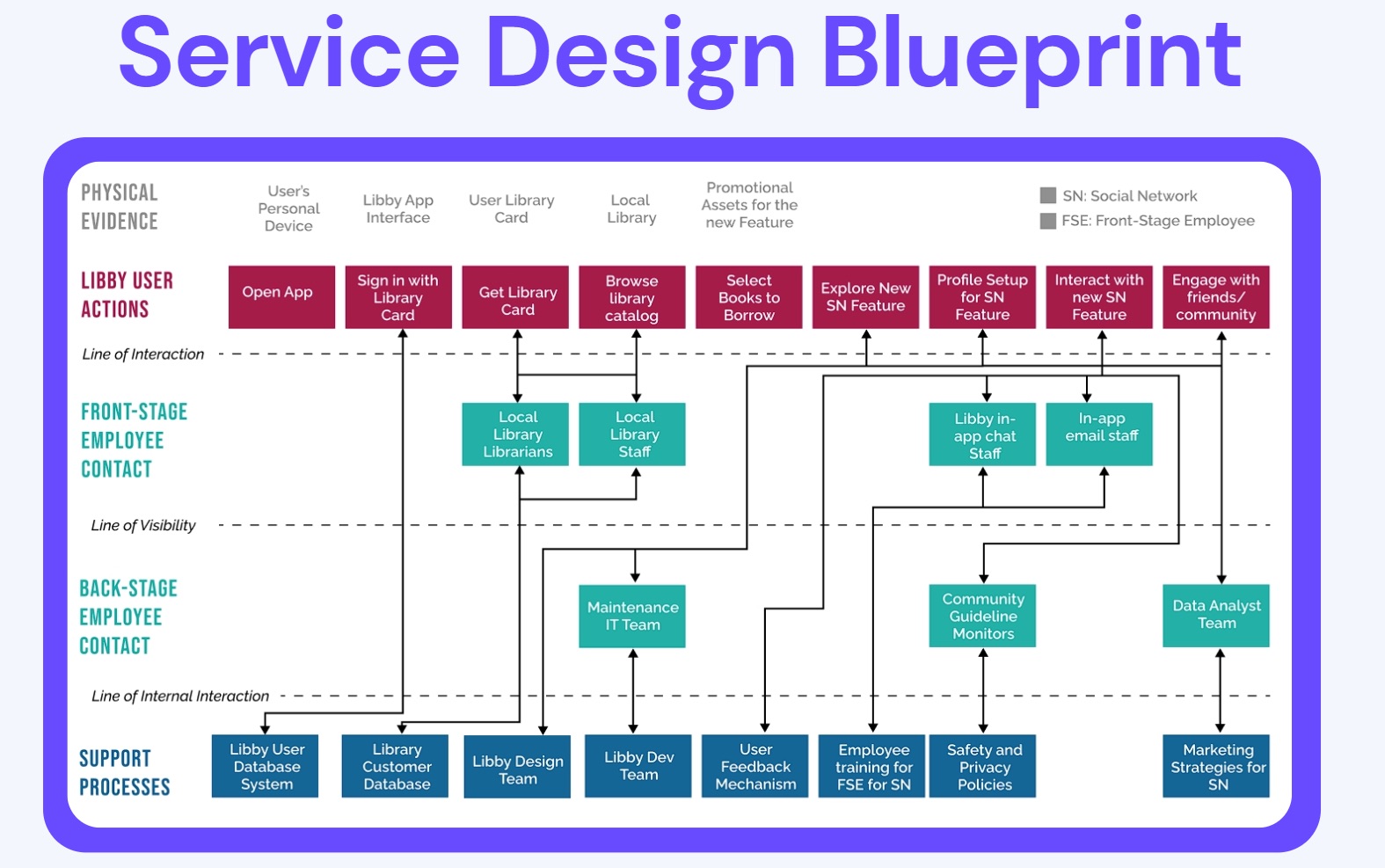
After laying out the service design blueprint, I found myself brimming with potential solutions for our social networking feature. The challenge was to channel these ideas into something coherent and meaningful.
The answer came in the form of 'How Might We' statements, a design thinking tool that helped me generate a list of focused questions, which I grouped into different categories of concepts.
Two distinct concepts bubbled up to the surface, carving out the direction for my research and design process.
The first addressed the diverse needs of our community. I asked myself, "How might we design a variety of features that cater to varying levels of community involvement?" This question let me explore the different ways users might want to engage with the social aspect of Libby.
The second concept went deeper, challenging a common assumption in social networking design. I wondered, "How might we challenge the assumption that all users want a public feed and explore more private sharing options?" This query pushed me to think beyond the traditional design box, opening up the possibility for a more nuanced social experience on Libby.